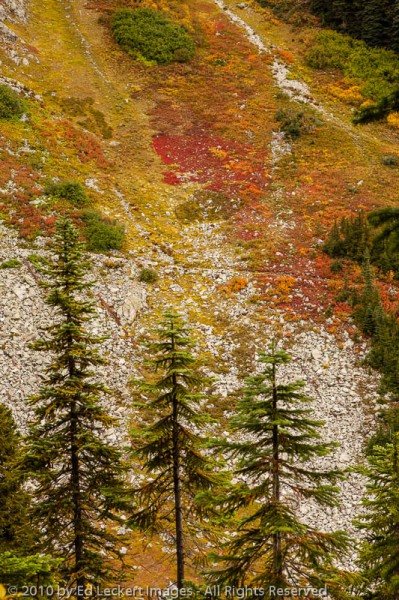


By the time you read this, I’ll be well into my fall foliage trip in New England. But as I write this, I’m still preparing for my trip and reading the twice-weekly fall foliage reports. The one that came out today was a doozy.
TODAY’S FALL FOLIAGE UPDATE!
Nothing happened.
Next report in three days.
There you have it: fall color is coming very slowly this year. So I thought it would be a good time to review the reasons leaves change color in the first place, and what influences them to hurry it up or take their time.
The short answer is we don’t know. OK, we know a lot, but as with most other subjects concerning the natural world, there are significant gaps in our knowledge. But we’ll cover what we do know.
For starters, leaves typically have up to three different types of pigments.
Beginning to see a trend? It’s all about the length of night. That’s the one parameter that changes at a consistent rate every year, and is considered to be the primary driver of the leaf-changing process. As the length of night increases, the chlorophyll goes away, unmasking the carotenoids that were there all along as well as the newly arrived anthocyanins.

Fall color coats the hillside on the Maple Pass Loop Trail in the Okanogan National Forest, Washington.
The timing of this process varies by species, with sourwood turning in late summer and oaks turning after all others have long since lost their leaves. This appears to be genetically controlled, since two trees of a given species at the same latitude but different altitudes (and thus different temperatures) will show the same coloration at the same time – again suggesting that length of night is the most important factor.
Of course, other factors besides length of night weigh in in their own way. (Is that too many “ways” or too many “ins” in that sentence? Oh well, no matter.) Weather is the next big factor, with temperature and moisture being important parameters. Warm sunny days followed by crisp cool nights (but no frost!) seems to be the perfect combination. Copious amounts of sugars are produced by the sunny days, but as veins become constricted as the nights grow longer there is nowhere for the sugars to go, so they build up in the leaves. Lots of sugars and light gives us the brilliant anthocyanin pigments, creating beautiful reds, purples, and crimson.
Moisture levels also contribute. For example, a summer drought will delay fall colors a bit. It is thought that the ideal conditions would be a warm, wet spring, a nice summer with adequate rainfall, and warm sunny days and cool nights in the fall.
Finally, as a layer of cells forms at the base of each leaf, the veins that carry fluids to and from leaves get blocked, sugars build up even more, and more anthocyanins are produced. Eventually the connecting tissues are completely sealed off and the leaf separates from the branch. And a good windstorm can end the show prematurely, too. Whatever the reason, this is a signal to the humans that it’s time to go home. The show is over.
So there you have it. By this time I should be in the thick of it out in New England, and in a couple of weeks I’ll let you know how it went!
Happy Leaf Peeping!

Ed, awesome read, thanks! I love all the scientific facts you packed into that post. Really makes fall come alive. Hope your New England trip goes well. Kudos!
– Dennis
Thanks,Dennis! Color is late this year, so not sure what’s going to happen.